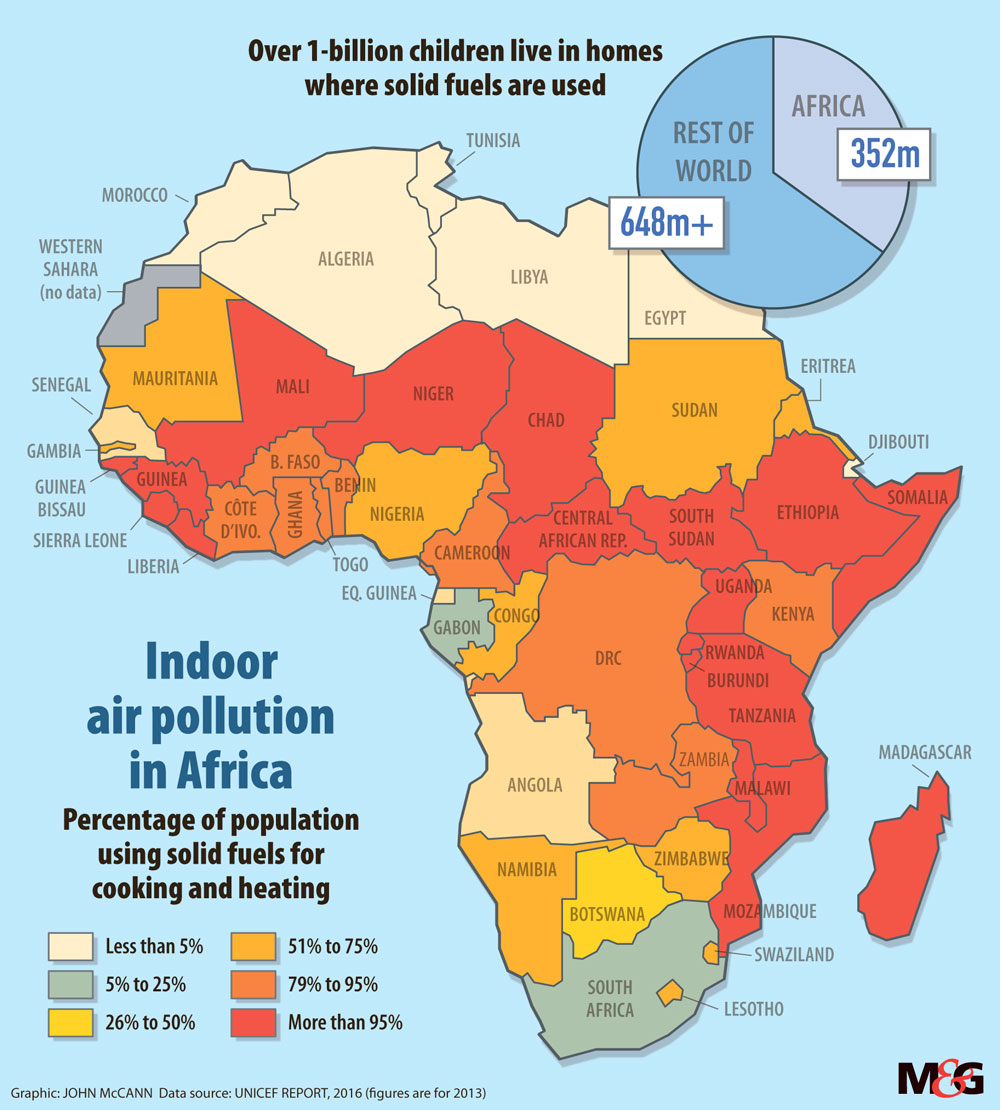A boy bathes next to a well while his family members collect water at a brick factory on the outskirts of Islamabad
About 300-million children live in parts of the world where the air quality is so poor that it is deemed to be toxic, and two billion children live in areas where air pollution exceeds the safe levels set by the World Health Organisation.
This is according to a new report by the United Nations Children’s Fund, released this week. Clear the Air for Children: The Impact of Air Pollution on Children used satellite imagery and overlaid population concentrations with reported air pollution levels.
Air pollution is a major contributing factor to the death of about 600 000 children under the age of five globally. That means it is largely responsible for one in 10 of all deaths of children under the age of five, according to the report.
The impact of toxic air is widespread, from miscarriages to low birth weight and negative impacts on the development of children’s brains. For those who do not die, this means a lifetime of not being able to achieve their potential. The fund said this means that children who would have asthma are usually unable to compete in sports, and children who have cognitive development problems struggle at school.
These long-term costs are borne largely by society, but there is also an economic cost. The report said the cost of healthcare and lost potential already takes up 0.3% of global gross domestic product (GDP).

Writing in the report, Anthony Lake, the fund’s executive director, said: “The sheer numbers of children affected are staggering.” This meant urgent action was needed to move children away from sources of pollution, he said.
The fund’s report also said children are more prone to the effects of breathing in polluted air because they breathe twice as quickly as adults and often play outside in polluted areas. Pollution — in the form of small particles such as dust and nitrogen oxides — then filters into the bloodstream and gets pumped around the body. In children, the barrier between blood vessels and the brain is also less resistant than in adults. That means the particles easily pass into parts of the brain and other organs and damage them.
The fund said its numbers did not include children affected by indoor air pollution. Data from the World Health Organisation, released earlier this year, said that form of pollution kills more than three million people a year. Outdoor air pollution kills 2.6-million people a year, it said.
Similar research, released by the World Bank in September, said air pollution kills 20 000 people a year in South Africa. This costs the local economy nearly R300-million a year in healthcare costs and lost human potential. Its research report, Air Pollution: Strengthening the Economic Case for Action, concluded that air pollution is responsible for one in every 10 deaths worldwide.
That makes it the fourth leading cause of premature deaths in the world, after smoking, obesity and dietary issues.